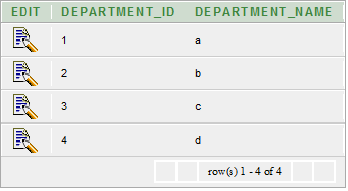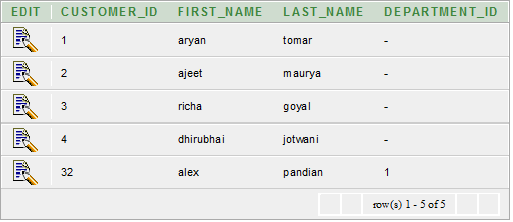Semi-join is introduced in Oracle 8.0. It provides an efficient method of performing a WHERE EXISTS sub-query.
A semi-join returns one copy of each row in first table for which at least one match is found.
Semi-joins are written using the EXISTS construct.
Oracle Semi Join Example
Let’s take two tables “departments” and “customer”
Departments table
CREATE TABLE "DEPARTMENTS"
( "DEPARTMENT_ID" NUMBER(10,0) NOT NULL ENABLE,
"DEPARTMENT_NAME" VARCHAR2(50) NOT NULL ENABLE,
CONSTRAINT "DEPARTMENTS_PK" PRIMARY KEY ("DEPARTMENT_ID") ENABLE
)
/
Customer table
CREATE TABLE "CUSTOMER"
( "CUSTOMER_ID" NUMBER,
"FIRST_NAME" VARCHAR2(4000),
"LAST_NAME" VARCHAR2(4000),
"DEPARTMENT_ID" NUMBER
)
/
Execute this query
SELECT departments.department_id, departments.department_name
FROM departments
WHERE EXISTS
(
SELECT 1
FROM customer
WHERE customer.department_id = departments.department_id
)
ORDER BY departments.department_id;Output

Difference between anti-join and semi-join
While a semi-join returns one copy of each row in the first table for which at least one match is found, an anti-join returns one copy of each row in the first table for which no match is found.
Leave a Reply